Speaker
Description
The proposed Circular Electron Positron Collider (CEPC) imposes new challenges for the vertex detector in terms of material budget, spatial resolution, readout speed, and power consumption. The TaichuPix chip is a CMOS Pixel Sensor being developed to meet the highest hit rate (~10$^{7}$/cm$^2$/s) requirement of CEPC vertex detector. Two small scale prototypes capable of achieving a hit rate up to 36 MHz/cm$^2$, were developed in a 180 nm CMOS process. This talk presents the improvements on the design of in-pixel readout to achieve a pixel pitch of 25 $\mu$m and a fast readout capability of 40 MHz. Two new in-pixel digital readout designs, benefiting from the FE-I3 and ALPIDE approaches, have been implemented to achieve a fast readout. The readout of the pixel array is based on a new proposed “column-drain” architecture. Pixels are arranged in double columns, with priority encoder within column and timestamp recorded at the end of double column. All the double columns are read out in parallel, in order to minimize the dead time. When a hit is detected in one of the pixels, the end of column circuitry stores the time stamp with a resolution of 25 ns. The data whose timestamp matches with the trigger are buffered for transmission in the trigger mode. Two TaichuPix prototypes were characterized with electrical and radioactive sources in laboratory. The test results on the chip functionality and the noise and threshold performance before and after ionizing radiation are reported.
| Primary experiment | CEPC |
|---|
